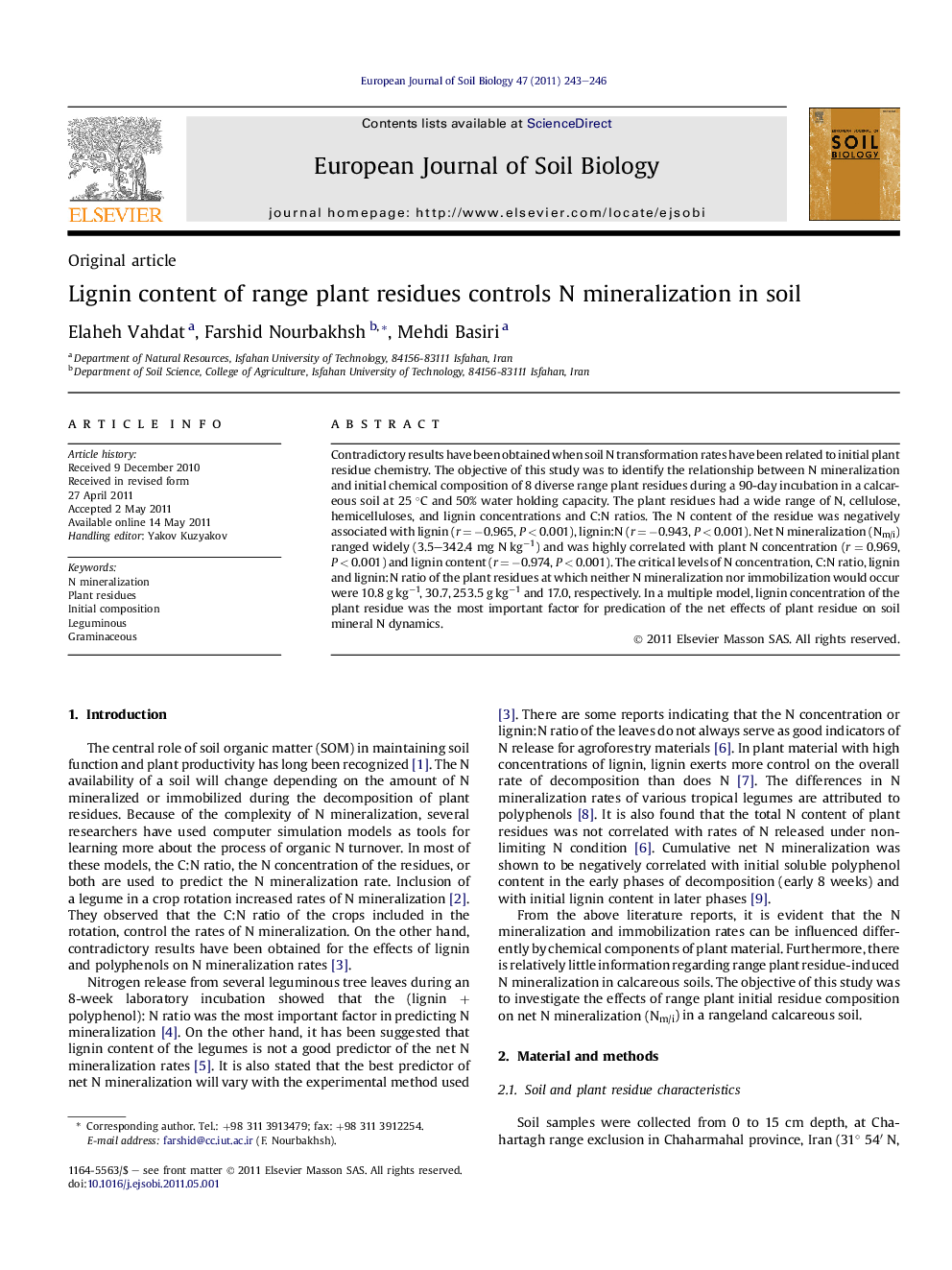| Article ID | Journal | Published Year | Pages | File Type |
|---|---|---|---|---|
| 4392166 | European Journal of Soil Biology | 2011 | 4 Pages |
Contradictory results have been obtained when soil N transformation rates have been related to initial plant residue chemistry. The objective of this study was to identify the relationship between N mineralization and initial chemical composition of 8 diverse range plant residues during a 90-day incubation in a calcareous soil at 25 °C and 50% water holding capacity. The plant residues had a wide range of N, cellulose, hemicelluloses, and lignin concentrations and C:N ratios. The N content of the residue was negatively associated with lignin (r = −0.965, P < 0.001), lignin:N (r = −0.943, P < 0.001). Net N mineralization (Nm/i) ranged widely (3.5–342.4 mg N kg−1) and was highly correlated with plant N concentration (r = 0.969, P < 0.001) and lignin content (r = −0.974, P < 0.001). The critical levels of N concentration, C:N ratio, lignin and lignin:N ratio of the plant residues at which neither N mineralization nor immobilization would occur were 10.8 g kg−1, 30.7, 253.5 g kg−1 and 17.0, respectively. In a multiple model, lignin concentration of the plant residue was the most important factor for predication of the net effects of plant residue on soil mineral N dynamics.
► Lignin and N contents of plants are negatively associated. ► N mineralization rate can be best predicted by lignin and N contents. ► Lignin:N is an integrative index to anticipate the N transformations.
